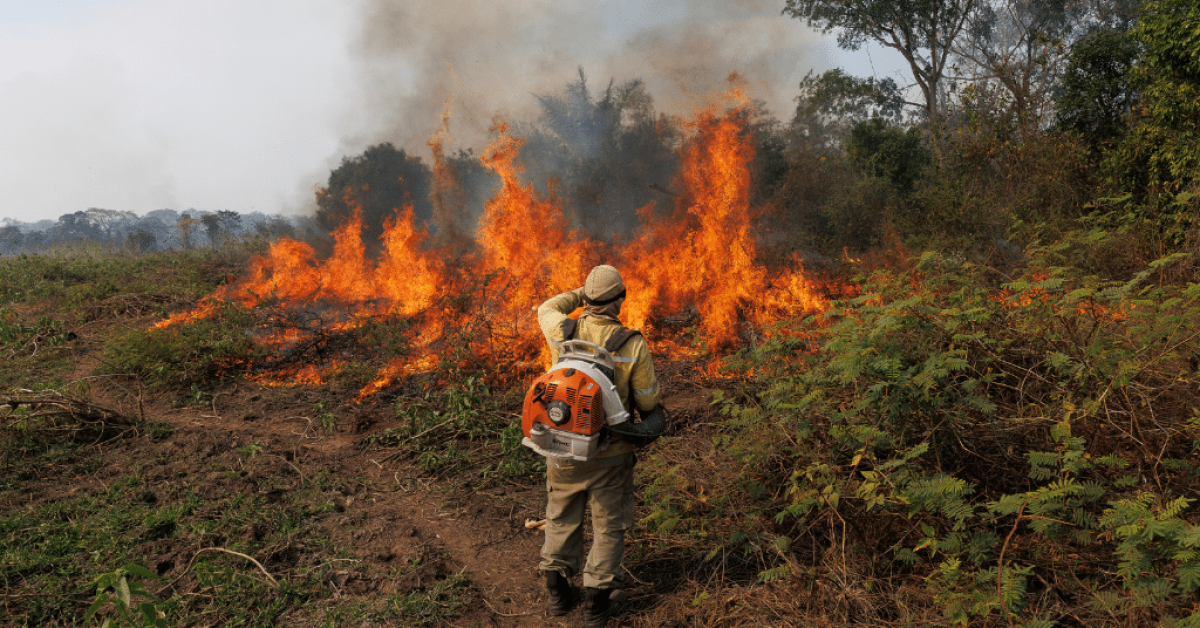Wildfires have become a serious threat to air quality worldwide. According to the UN weather agency, the smoke and particles from these fires are increasing air pollution levels, impacting health and the environment. This problem is growing as climate change causes hotter and drier conditions, making wildfires more frequent and intense.
For many young people and communities, poor air quality means breathing difficulties and higher risks of diseases such as asthma. Understanding how wildfires contribute to air pollution can help us prepare and support efforts to control both fire outbreaks and pollution.
How Wildfires Add to Air Pollution
When wildfires burn forests, grasslands, or farmland, they release huge amounts of smoke that contain harmful gases and tiny particles. These tiny particles, called PM2.5, can easily enter our lungs and bloodstream, causing serious health problems. The UN World Meteorological Organization (WMO) explains that these fires send more pollutants into the air than many urban areas combined (WMO Press Release).
The smoke can travel thousands of kilometers, crossing borders and spreading pollution globally. This means even countries far from the fire locations can feel the effects on their air quality. For example, wildfires in California have been shown to affect air in parts of the US and even Canada.
The Health Risks Linked to Wildfire Smoke
Exposure to wildfire smoke can cause irritation of the eyes, nose, throat, and lungs. It can worsen chronic diseases like asthma, bronchitis, and heart disease, especially in children, older adults, and people with existing health problems. A report by the World Health Organization (WHO) highlights the dangers of air pollution caused by wildfire smoke and recommends public health measures to reduce exposure (WHO Air Quality Facts).
Young people should be cautious during wildfire seasons by avoiding outdoor activities when smoke is heavy and using masks designed to filter out fine particles. Governments also play a key role by monitoring air quality and issuing warnings to protect public health.
Climate Change and the Growing Wildfire Problem
Scientists agree that climate change is worsening wildfire seasons. Higher temperatures and changing rainfall patterns dry out forests and vegetation, making them more flammable. The Intergovernmental Panel on Climate Change (IPCC) reports that these shifts will likely increase the number of wildfires globally, making air pollution from fires an even bigger challenge (IPCC Report 2023).
This means more action is needed to reduce greenhouse gas emissions and protect nature from fire damage. Planting trees, creating fire breaks, and promoting sustainable land management can help reduce wildfire risks. Community awareness and preparedness are also vital.
Steps to Protect Yourself and Improve Air Quality
During wildfire seasons, keep informed about local air quality through trusted sources and apps. Stay indoors when pollution levels are high and use air purifiers if possible. If you must go outside, wearing an N95 mask can reduce exposure to harmful particles.
Supporting policies and programs that focus on reducing climate change and managing natural areas responsibly can help prevent frequent wildfires. Educating young people about environmental care and health risks strengthens community resilience.
Conclusion
Wildfires are more than just a fire problem; they are a major cause of air pollution with serious health effects, especially for young people and vulnerable groups. The warnings from UN and other global agencies serve as a reminder that we need to act now to address climate change and protect our air quality.
By staying informed and taking safety precautions, all of us can reduce the impact of wildfire smoke on our health. Together, communities and governments can work toward a safer, cleaner future.













